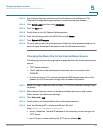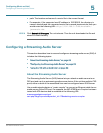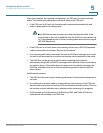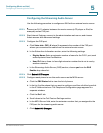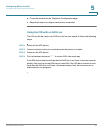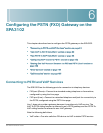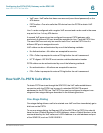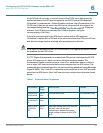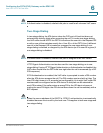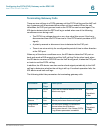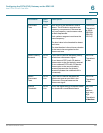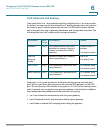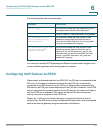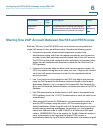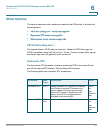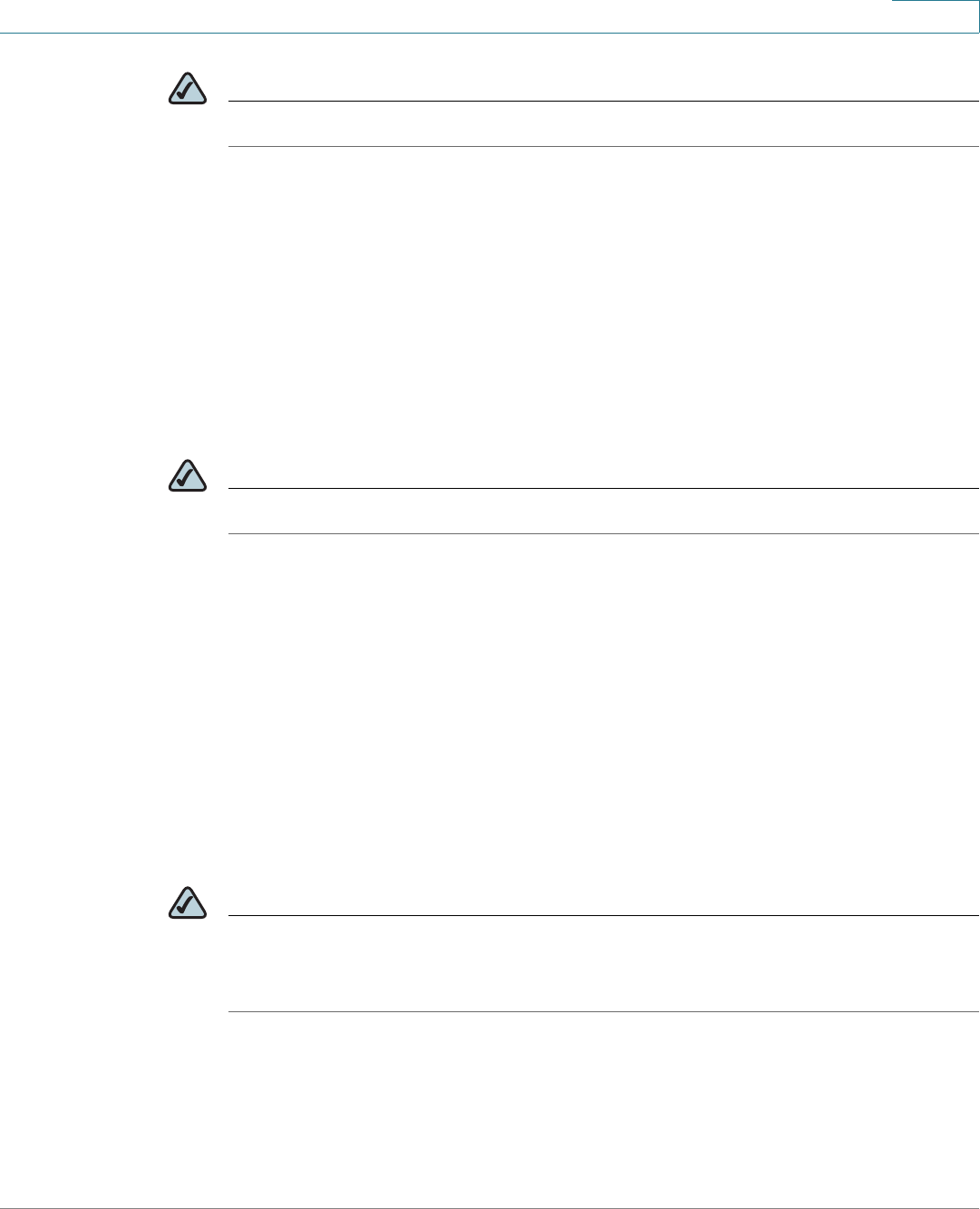
Configuring the PSTN (FXO) Gateway on the SPA3102
How VoIP-To-PSTN Calls Work
ATA Administration Guide 97
6
NOTE If Authentication is disabled, a default dial plan is used for all unknown VoIP users.
Two-Stage Dialing
In two-stage dialing, the ATA device takes the FXO port off-hook but does not
automatically dial any digits after accepting the call. To invoke two-stage dialing,
the VoIP caller should INVITE the PSTN Line without the user-id in the Request-URI
or with a user-id that matches exactly the <
User ID
n> of the PSTN Line. A different
user-id in the Request-URI is treated as a request for one-stage dialing if one-
stage dialing is enabled, or dropped by the ATA device (as if no user-id is given) if
one-stage dialing is disabled.
NOTE If Authentication is disabled, a default dial plan is assigned to all VoIP callers.
HTTP Digest Authentication can be also used for two-stage dialing, as in one-
stage dialing. If using HTTP Digest Authentication or Authentication is disabled, the
VoIP caller should hear the PSTN dial tone right after the call is answered (by a SIP
200 response).
If PIN Authentication is enabled, the VoIP caller is prompted to enter a PIN number
after the ATA device answers the call. The PIN number must end with a # key. The
inter-PIN-digit timeout is 10 seconds (not configurable). Up to eight VoIP caller PIN
numbers can be configured on the ATA device. A dial plan can be selected for
each PIN number. If the caller enters a wrong PIN or the ATA device times out
waiting for more PIN digits, the ATA device tears down the call immediately with a
BYE request.
NOTE When the source address of the INVITE is 127.0.0.1, authentication is automatically
disabled because this is a call by the local user. This applies to both one-stage and
two-stage dialing.



